- Published on Wednesday, October 9, 2024, last updated
Feature Request Template: Best Practices and 5 Examples to use directly
If you're here, it means you already know you need to understand your user needs to stay competitive, which is especially true in SaaS. A great way to gather useful input for product updates is through feature requests. Having a clear feature request template helps you collect relevant feedback efficiently.
This guide covers how to create and use feature request templates that make it easier to gather feedback. You'll learn best practices for managing requests and see examples of how to improve your feedback process. These templates and tips will help you deliver better solutions for your users, so stay with me!
Table of Contents
- What is a Feature Request Template?
- Why Feature Request Templates Matter for SaaS Companies
- Essential Elements of a Feature Request Form
- 5 Best Practices for Collecting and Managing Feature Requests
- 5 Effective Feature Request Templates
- How to Integrate Feature Requests into Your Product Roadmap
- Closing the Feedback Loop: Why It’s Important
- 3 Real-world Examples of Feature Request Templates in Action
- Final Thoughts: Making the Most of Feature Requests for SaaS Success
What is a Feature Request Template?
A feature request template is a form designed to let users propose new features or enhancements for a product. It typically includes fields to describe the feature, its purpose, and potential benefits. It helps businesses gather detailed and consistent feedback, which can guide development decisions.
Whether included directly in an app, shared through email, or accessed via a feature request portal, these templates help customers submit their ideas easily. For product teams, they serve as a key tool to collect, organize, and prioritize feedback. This approach helps avoid unnecessary features and ensures the team stays aligned with the company's objectives.

Why Feature Request Templates Matter for SaaS Companies
It's important to understand user needs to retain customers and stay competitive. Feature request templates simplify collecting insights, offering SaaS companies direct access to user feedback. By using these templates, companies can:
- Identify and focus on the features that will most enhance customer satisfaction.
- Improve their product roadmap by incorporating highly requested features.
- Foster customer loyalty by showing they care about user input.
For startups and growing SaaS companies, managing feature suggestions helps with early product validation, ensuring new features align with customer expectations before they’re built.
Axolo is a Slack app to help techteams review pull request seamlessly
Essential Elements of a Feature Request Form
To create an effective feature request form, include the following key elements:
- Title: A brief summary of the requested feature.
- Description: A detailed explanation of what the user wants and why it matters.
- Tags: These help categorize the request, making it easier to sort and prioritize based on feature areas or product aspects.
By keeping the form simple, you make it easy for users to submit ideas while ensuring your team collects enough data to make informed decisions.
Ask yourself
Are we making it easy enough for users to provide feedback?
How could we improve it?
5 Best Practices for Collecting and Managing Feature Requests
When it comes to product development, especially in SaaS, collecting and handling feature requests plays an important role. To make sure your team gathers meaningful feedback and prioritizes features well, here are five best practices to keep in mind.
1. Keep the Feature Request Form Simple
A simple form increases the chances of getting more feedback. Only include essential fields like title, description, and tags. The easier it is for users to submit suggestions, the more likely they will share valuable input.

2. Implement Feature Upvoting
Allow users to upvote feature requests from others. This makes it easier to prioritize features based on popularity, ensuring the product team works on what's most important. It also has the advantage to increase user engagement and helps build a stronger connection between customers and the product.
3. Use a Feedback Widget for Easy Access
Add a feedback widget directly in your product to allow users to submit requests while they are actively using it. A visible, easy-to-use widget leads to more submissions and more relevant feedback since it's captured in the moment.
4. Regularly Share Access to Your Feedback Portal
Even if you have a feedback portal, users need regular reminders to use it. Promote it via emails, customer success interactions, and social media to keep it top of mind. Consistent promotion ensures users know where to submit their ideas.
5. Prioritize Features Using a Feedback Matrix
After collecting requests, prioritize them using a feedback matrix. This tool helps identify recurring themes and high-impact features. By focusing on the most requested features, you ensure that the updates you deliver provide real value to users.
When the value is not straightforward, I advise every team to follow this kind of complexity/value graph. You place all your ideas on it, and it becomes easier to prioritize.
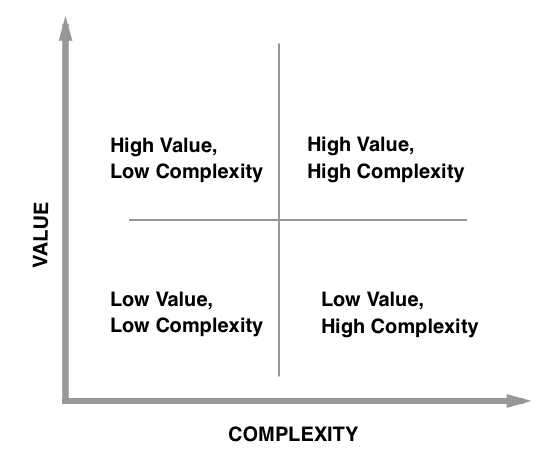
5 Effective Feature Request Templates
Creating the right feature request template ensures that you gather the necessary information to make informed decisions about what to build next. Here are five proven templates to help your team collect actionable feedback.
Enable your team to mergepull requests faster with Axolo
1. Simple Feature Request Template (Title, Description, Tags)
This basic template is ideal for gathering a high volume of requests while keeping the process straightforward. It includes three key fields:
- Title: A brief summary of the request.
- Description: An explanation of the feature and why it’s needed.
- Tags: Optional categories like UI, performance, or new feature.
2. Detailed Feature Request Template (Description and Reasoning)
For teams that need more context, this template includes a section asking users to explain their reasoning, providing better insight into the feature’s importance.
- Title
- Description
- Why do you want this feature?
3. What, Why, How Template
This template gathers additional insight by asking how users are managing without the feature. It helps assess if the request is essential or just a convenience.
- What feature do you want us to build?
- Why do you want this feature?
- How are you currently managing this task?
4. User Type-based Feature Request Template
For products with multiple user types (e.g., enterprise vs. individual), this template helps prioritize requests by allowing users to identify themselves.
- Title
- Description
- User type (dropdown menu)
5. Impact-based Feature Request Template
This template focuses on the impact of the feature by asking how its absence affects users. This can help prioritize features that will drive the most significant results.
- What feature do you want us to build?
- How does not having this feature negatively affect you?
- What would you be able to achieve with this feature?
How to Integrate Feature Requests into Your Product Roadmap
After gathering feature requests through your templates, it's crucial to incorporate them into your product roadmap in an organized way. The roadmap gives a clear visual of upcoming updates, new features, and long-term goals. By aligning feature requests with your roadmap, you can involve users in the product development process and communicate what's next.
To collect these feature requests, if you already have your template, you need to give your users access to it. A quick-win might be to create a Kanban board on a GitHub project for example, and set up your default feature request there.
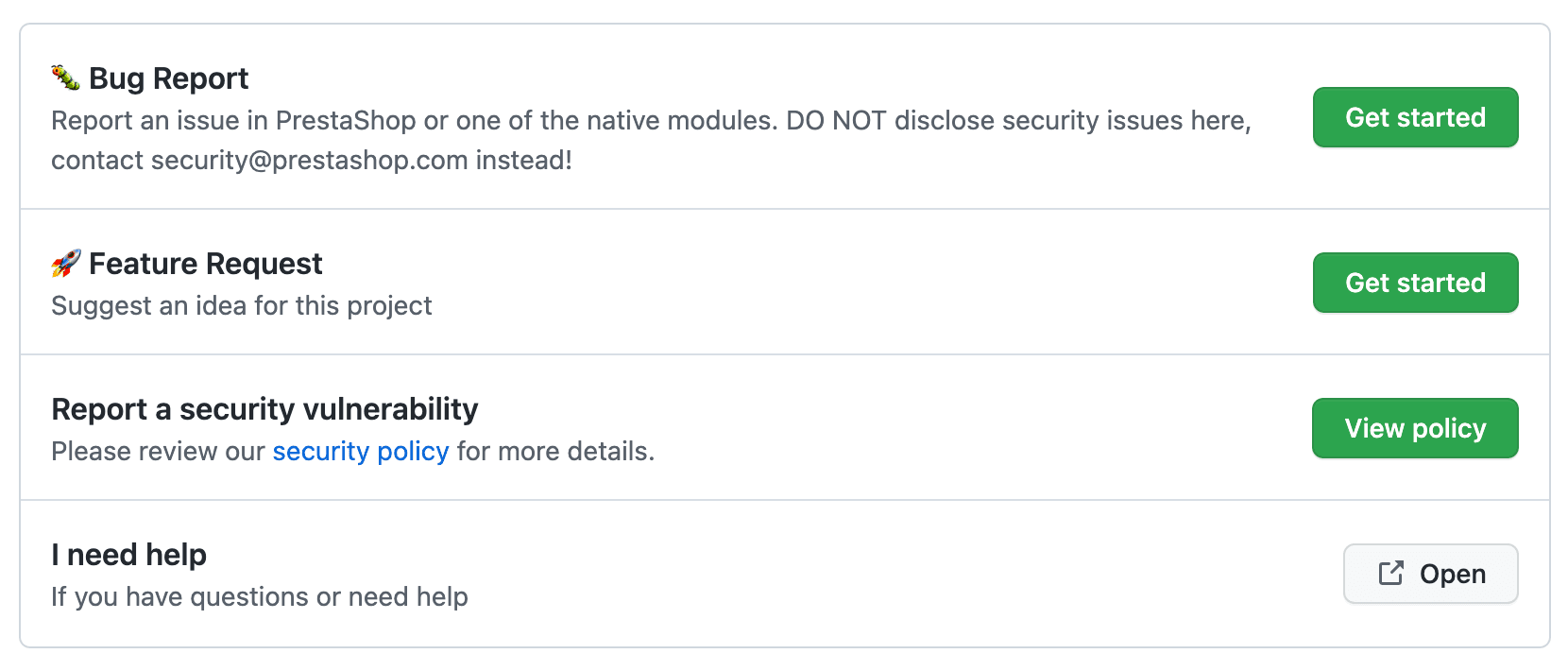
Evaluate and Prioritize
After collecting requests, evaluate them based on factors like:
- Customer demand
- Business value
- Technical feasibility
Prioritizing based on these factors ensures you're working on the most impactful features.
Public Product Roadmap
Consider making your product roadmap public, allowing users to see features that are:
- In progress
- Planned
- Completed
This transparency helps manage expectations and builds trust with users.
Feedback Loop Integration
Close the feedback loop by linking feature requests directly to your roadmap. This allows users to track how their suggestions turn into real product updates, enhancing engagement.
Closing the Feedback Loop: Why It’s Important
Closing the feedback loop is a key step in managing feature requests, though it's often missed. Customers want to know they've been heard, and even if their suggestions aren't implemented right away, acknowledging their input fosters trust and keeps them engaged.
Acknowledge Every Request
Send an automated message thanking users for their feedback and letting them know it will be considered. This shows that their voice matters.
Provide Updates
Regularly update users on the status of their requests. If a feature is added to the roadmap, let them know. Even when a request isn't implemented, explaining the reasoning helps users understand your product's direction.
Tie Feature Updates to Feedback
When you release a feature based on user feedback, highlight it in release notes, emails, or announcements. This shows that you're listening and encourages continued engagement from your users.
Learning from the best
Discover how leading SaaS companies streamline their feedback collection and turn feature requests into actionable development plans.
3 Real-world Examples of Feature Request Templates in Action
To see how feature request templates work in practice, here are three examples from successful SaaS companies:
1. In-app Feedback Forms (Slack)
Slack gathers user feedback through an in-app feature request survey, with an added open-ended question for more detailed responses. This combination allows them to collect both numbers and detailed insights, helping the team better organize feedback and understand user experiences.
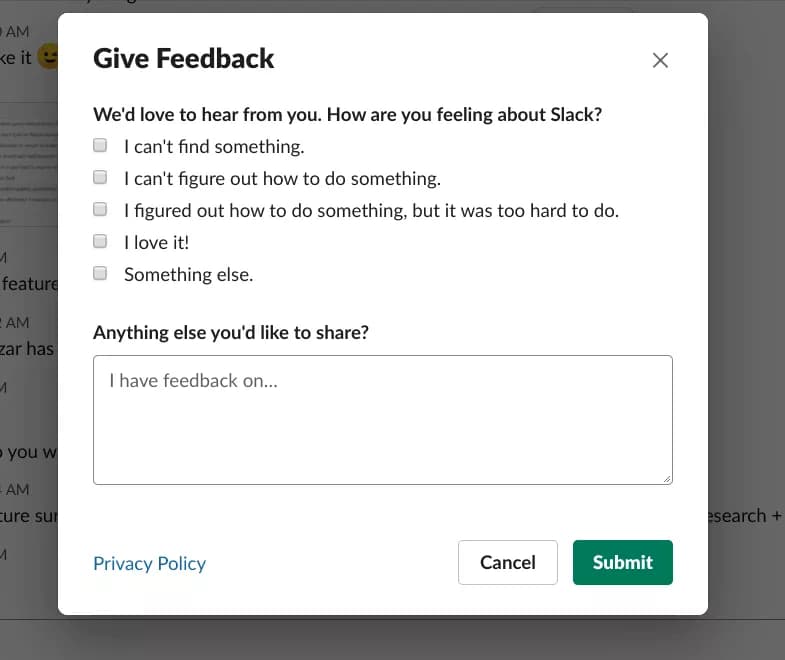
2. Public Product Roadmap (Buffer)
Buffer has a public product roadmap where anyone can view upcoming features. Users can also propose new features, comment on existing requests they’re interested in, and upvote the ones they want prioritized.
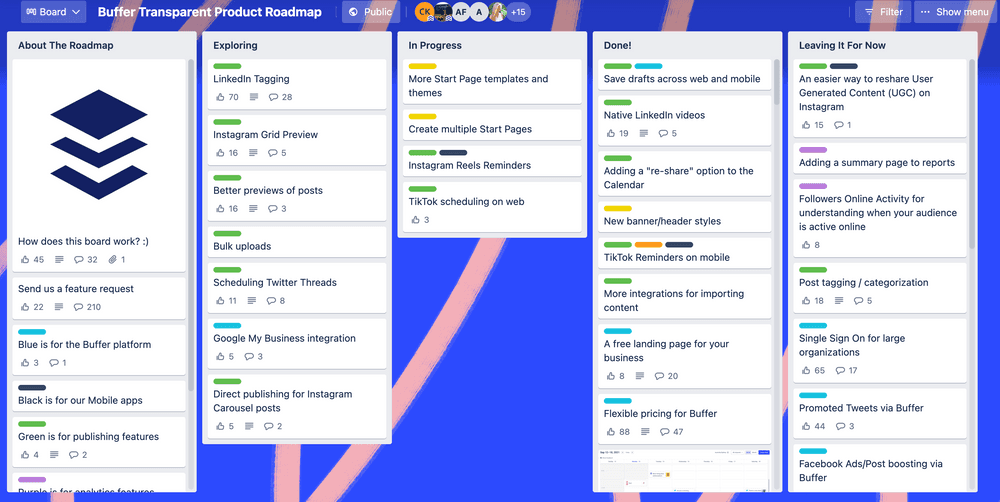
3. Bug Report Template (ClickUp)
Customers may run into bugs with your product, and addressing them quickly is key to maintaining a great user experience and preventing churn. ClickUp manages this with its "Report a Bug" template. By requesting visuals along with bug reports, ClickUp can better understand the issue and resolve it efficiently.
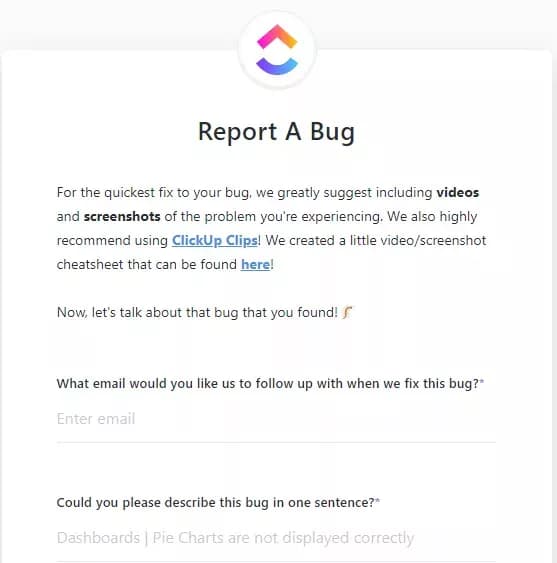
Final Thoughts: Making the Most of Feature Requests for SaaS Success
You need to handle feature requests if you want to stay competitive. With well-structured feature request templates, you gain valuable insights, involve users in the process, and make informed decisions on which features to focus on. It's mandatory for every SaaS company.
But then, it's on you to prioritize the requests. This means you should focus on understanding the underlying problem or motivation behind a feature request, rather than just addressing the symptoms or specific demands.
Axolo User Experiences
2480+ developers online
